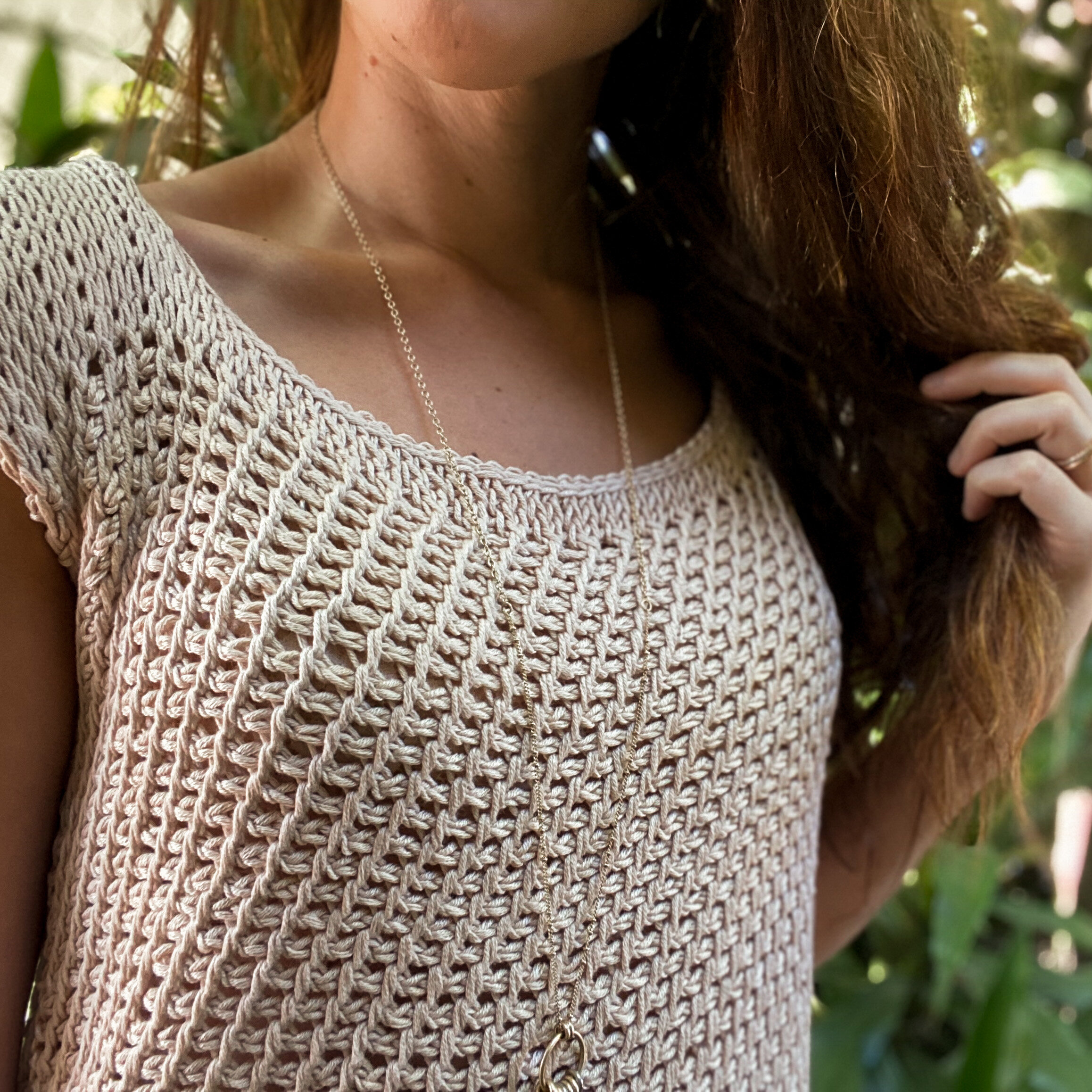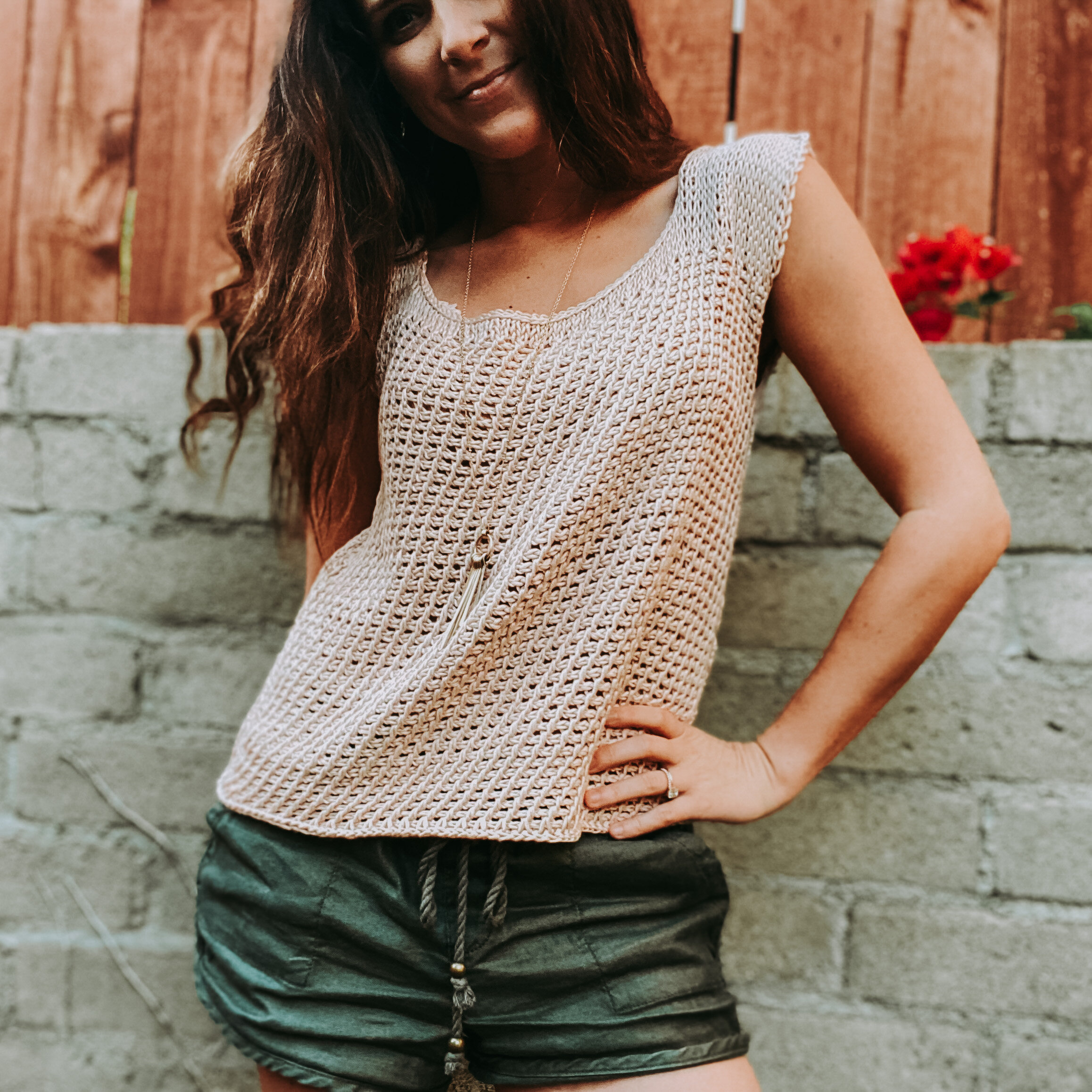How do I measure yardage?
If you have signed up for a pattern test, chances are the designer has asked you to let them know how many yards of yarn you used for your knit or crochet project. At first, this may sound overwhelming, but it’s actually quite simple.
To clarify, when a designer asks you for the yards of yarn used, they are not asking you to “guesstimate” based on eyeballing your resulting skeins. Your response should not be “about a skein and a half, so, I guess like 400 yards?” I will be honest; this is actually how I answered when I first started testing. But for most projects, especially garments, the designer needs a more specific response. This is because they are trying to accurately list yardage needed for each size in their pattern, to ensure that customers know how much yarn they need to make the design in their size. The designer has often only made one sample in their own size, so while they may be able to work up rough estimates before the testing period, they are depending on you to accurately report your yardage for the size you are testing so that their final pattern is as accurate as possible. (And remember, gauge is super important to being able to report accurate yardage. Check out this post about gauge!)
So, how do you calculate yardage?
First, you will need a few things:
1. Yarn label
You need to know how many yards are in a full skein and how much a full skein weighs. Yes, this means you cannot use that random skein of yarn you found that is missing its label. Not for a pattern test.
2. Scale
You need to weigh your starting, finished, and/or remaining yarn. (See the Tester Tools post for a link to the scale I have.)
3. Calculator
The one on your phone is fine. It will be basic math.
4. Your yarn and/or finished object
♡♡♡
You may have seen this formula I put in the FAQs:
This is the basic formula you will use for all yarn yardage calculations.
*NOTE* I am using grams throughout this article, but you can also measure in ounces. Just be consistent throughout your calculations. If you use a full skein’s weight in ounces, remember that you’ll need to measure your resulting item/yarn in ounces too.
How you will calculate your yardage depends on a number of things. Here are a few questions to help direct you to the appropriate section below:
Did you use the same yarn throughout your entire project? If so, see SCENARIO A.
Did you use two or more different yarns throughout your entire project? If so, see SCENARIO B.
Did you start with less than a full skein of the yarn you are using? If so, see SCENARIO C.
Is it difficult to measure your final project and/or easier to just measure the amount of yarn you have left? If so, see SCENARIO B.
Do you need to know how much you used for each of multiple colors? If so, see SCENARIO B.
♡♡♡
SCENARIO A: Measuring your yardage based on the weight of your finished object.
(“Finished Object” will be referred to as “FO” in the formulas)
This calculation will work for you if you used the same yarn throughout the project (e.g., all Lion Brand Coboo or all Paintbox Cotton DK) and you do not need to report separate yardage for different colors of the same yarn used within the project (if applicable).
Step 1: Note the total yards in a FULL SKEIN of the yarn used (on the label).
Step 2: Note the total grams in a FULL SKEIN of the yarn used.
Step 3: Weigh your finished item and note the grams.
Step 4: Plug into this formula:
Example: I am using a yarn for which a full skein is 100 grams and 350 yards. My finished shawl using skeins of that yarn weighed 137 grams. Here is my calculation:
[(350) x (137)] / 100 = 479.5 yards used in my final shawl.
♡♡♡
SCENARIO B: Measuring your yardage based on the weight of the yarn you have leftover.
This method is helpful if your FO is difficult to measure on your small scale, or if you used multiple yarns and/or colors and want to get estimates for each separate yarn.
Step 1: Note the total yards in a FULL SKEIN of the yarn used (on the label).
Step 2: Note the total grams in a FULL SKEIN of the yarn used.
Step 3: Weigh your leftover yarn and note the grams.
Step 4: Plug into this formula:
You’re not done.
Step 5: Next, you need to subtract that number from the amount of yards you started with to figure out how many yards you used.
If you started with a full skein: (TOTAL YARDS IN FULL SKEIN) – (TOTAL YARDS LEFT IN SKEIN) = yards used in finished item.
If you started with a partial skein, make sure you note your starting grams and see SCENARIO C below.
*NOTE* If you used a full skein + more of a second or third, you’ll want to add the # of yards in all of the full skeins to the number calculated above. So, for example, if you used 2 full skein + part of another skein, you’ll measure: [(yardage in a full skein) x 2] + (yardage from above calculation for partial skein) = total yardage.
Example: I have a skein of yarn that is 100 g and 350 yards. After I finished my shawl, I had used one full skein and had 35 g left of the second skein. Here is my calculation:
[(350) x (35)] / 100 = 122.5 yards left in my second skein.
Total yard used from second skein: 350-122.5 = 227.5 yards.
Total yards used in finished shawl: 350 (1 full skein) + 227.5 (amount from second skein) = 577.5 yards
♡♡♡
SCENARIO C: Start here if you are measuring based on your resulting yarn (rather than your final FO weight) but starting with less than a full skein of yarn.
Remember, if you can just measure your FO under SCENARIO A above, start there. However, this calculation may be needed if you are doing a project using multiple partial skeins of scrap yarn from your stash or incorporating a partial skein with other yarn used, for example.
The main thing you need to do here, before you can begin your project, is weigh your starting yarn and note the grams. *KEEP TRACK OF THIS NUMBER THROUGHOUT YOUR PROJECT*
Then after you finish your project, weigh the leftover yarn and subtract that weight that from starting weight. This will give you the final weight of yarn used in finish object, which you can then use for the calculations outlined above in SCENARIO A or B. Here is the basic formula:
(Starting Yarn Weight) - (Weight of Yarn Remaining) = Final weight used in item. Use this number in the formulas outlined above under Scenario A or B.
Example: One full skein of the yarn I used is 100 g and 350 yards. However, I started with 80 grams of the yarn, because I had used this yarn for another project before. After I made my new project, I had 37 grams left. Here is my calculation: 80g - 37g = 43 g. That means I used 43 g of this yarn in my finished item.
Then, to calculate yardage for your finished project, use the formula under Scenario A above: [(350) x (43)] / 100 = 150.5 yards of this yarn used in FO.
♡♡♡
As with all topics on this blog, I do not purport to be a total expert, especially on something as mathy as this! There may be other ways of calculating yardage; this is simply what I do. I hope it is helpful to get you started. If you have any questions, please feel free to message me. Here are some other resources that may help, as well:
There is a helpful calculator available on the Joy of Motion blog here.
Ravelry can also do the calculation for you if you know the final weight of the FO and the yarn you used is pre-loaded into Ravelry (i.e., it shows up when you click the little link icon). When you enter the “Yarn Used” on your project page, select the proper yarn. Then, underneath “Amount,” select “enter totals instead.” Select grams or ounces and put in your FO weight. When you save, Ravelry will update to reflect your yardage on your project page. (Note, this depends on the yarn used being pre-loaded with full skein information into Ravelry. It may not work for more unique yarns that do not show up on Ravelry.)
[@TheSkeiniac pictured above wearing the Tunisian Desert Top designed by @detroitknots, using @lionbrandyarn Coboo.]






